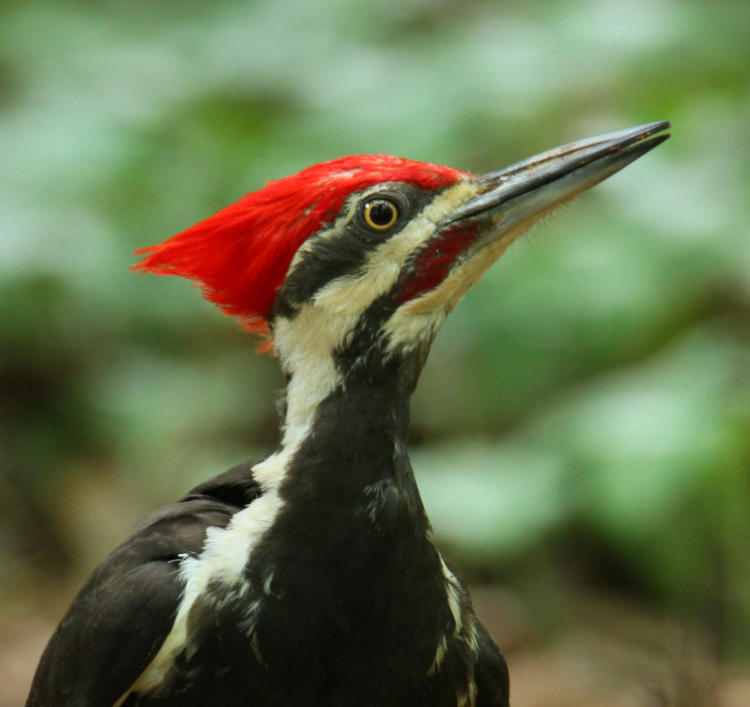
Our opening image today comes from 1995, my first trip alone to Florida, dedicated to nature photography. I was starting to get serious about it, but was still using older Olympus equipment and print film, and this was taken with a Vivitar 75-260mm lens. I was in JN “Ding” Darling National Wildlife Refuge on Sanibel Island and lucked onto this pair of pileated woodpeckers (Dryocopus pileatus.) I was absolutely delighted, not just to photograph one for the first time, but to get a pair in such good conditions. I initially believed this to be male and female, but I now suspect, from appearance, that the one on the left is a juvenile. Pileateds are large, almost the size of crows, and have distinctive calls and habits, but they remained at least a bit secretive every place that I’d lived.
Notably, immediately after this visit, I went literally across the street to a wildlife rehab and education center, CROW (Clinic for the Rehabilitation of Wildlife) and attended a presentation that was conveniently scheduled for only a few minutes after my arrival. I was active in wildlife rehab at that point and took the opportunity to examine their facilities and efforts, including chatting with one of the presenters for a while afterwards. We did this in sight of a large outdoor cage housing a captive pileated, an adult male with an amputated wing that could not be released and thus served as a resident ambassador and conditioning assistant. The presenter there told me of the wild pileated that lived in the refuge and would come over from time to time to drum territorially on the main cage supports, driving the resident within nearly apoplectic since it could not reach the intruder on the outside of the cage to drive him off. Within minutes, I got to see this firsthand, though my camera remained in the car for some reason.
In the intervening 27 years, I’ve seen pileateds perhaps a dozen times, obtaining photographs somewhere around half that – one of the earliest posts here was about one visiting the place where I worked. It didn’t take too long before I considered the initial image up there to be pretty crappy, yet I wasn’t snagging any really decent portraits – better, surely, but not what I considered impressive.
Until last summer.

I probably don’t have any better illustration of my progress in photography than these, but let’s examine the significant changes. Equipment, surely (Olympus OM-10 with Vivitar 76-260mm versus Canon 7D with Tamron 150-600mm,) and finally getting a decent opportunity contributed hugely. At the same time, my ability to instantly recognize the calls, flight profile, and plumage as it passed in flight were major factors, as well as tracking the fleeting glimpses to realize that it had landed on the ground. And then, the careful and patient creeping forward, using treetrunks to disguise my movements multiple times, until I could get close enough to lean out slowly and fire off several frames; I wouldn’t say that this was my best accomplishment of stalking, but it certainly produced the goods. You can’t control luck, but on occasion you can control how well you exploit it.



















































